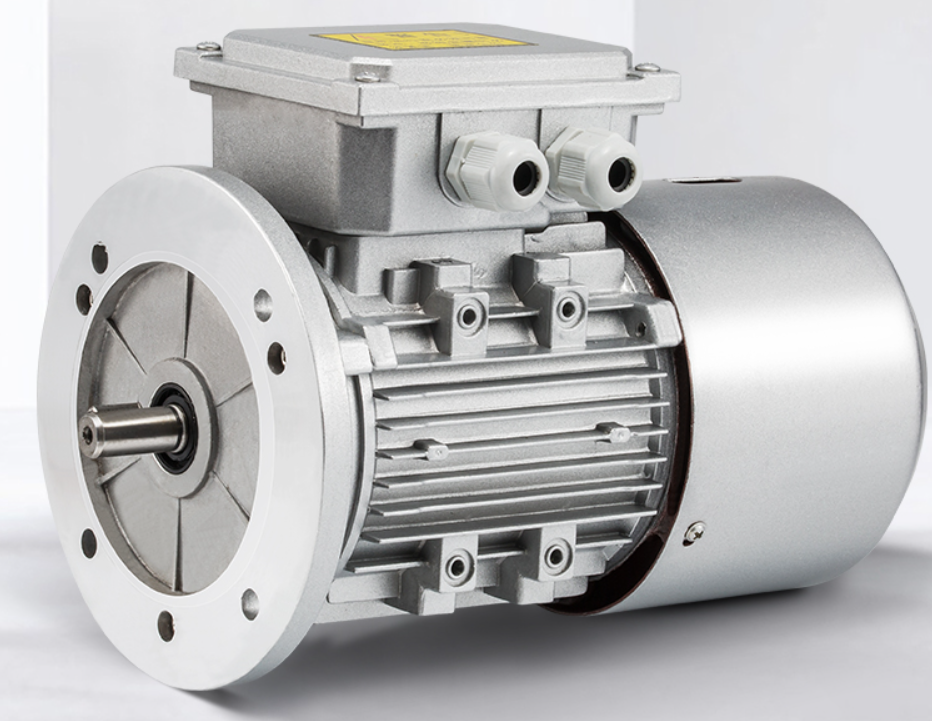Brake motors , also known as electromagnetic brake motors and brake asynchronous motors , are fully enclosed, fan-cooled, squirrel-cage asynchronous motors withDC electromagnetic brakes. Brake motors are divided into DC brake motors and AC brake motors . The DC brake motor needs to be installed with a rectifier, and the rectified voltage is 99V, 170V or 90-108V. Since the DC braking motor requires rectified voltage, the fastest braking time is about 0.6 seconds. Since the DC voltage of the AC braking motor is 380 volts, no rectification is required, and the braking time can be completed within 0.2 seconds. The DC brake motor is simple in structure, low in cost, heats up quickly, and is easy to burn out. AC brake motor has complex structure, high cost,goodeffectand durability, and is an ideal power source for automatic control. However, the braking parts (brakes) of DC braking motors and AC braking motors cannot be connected to variable frequency voltage, and additional wiring is required for synchronous control!
1. Application range of brake motor
Brake motors require high-precision positioning. As a brake motor, it should have the characteristics of rapid braking, accurate positioning, interchangeable braking systems, simple structure, and convenient replacement and maintenance. Many factories require a brake motor to control the inertia of the motor to achieve the desired positioning and automatic operation of the machinery.
Such as lifting machinery, ceramic printing machinery, coating machinery, leather machinery, etc. Brake motors are widely used and can be found in various fields of mechanical equipment.
2. Working principle of brake motor
There is an electromagnetic holding brake at the end of the motor, and when the motor is energized, the brake is also energized. At this time, the motor is not braked, and the power is also cut off when the motor is powered off. The holding brake brakes the motor under the action of the spring.
The two wires connect the two AC input ends of the full rectifier bridge in parallel to any two input ends of the motor, synchronously input 380 volts AC with the motor, and connect the two DC output ends to the brake excitation coil. The working principle is that when the motor is energized, the direct current of the coil generates suction to separate the two friction surfaces at the tail, and the motor rotates freely; otherwise, the motor is braked by the restoring force of the spring. Depending on the power of the motor, the coil resistance is between tens and hundreds of ohms.
3. Standard symbol of brake motor
Power supply : three-phase, 380V50Hz.
Working mode : S1 continuous working system.
Protection class : IP55.
Cooling method : IC0141.
Insulation class : f class
Connection : “y” connects below 3KW, “△” connects above 4kW (including 4KW).
working conditions :
Ambient temperature : -20℃-40℃.
Altitude : below 1000 meters.
4. Braking motor braking method : power-off braking
The braking power is provided by the rectifier in the junction box, AC220V-DC99V below H100, AC380-DC170V above H112. Brake motors are suitable for the main shaft drive and auxiliary drive of various machinery such as machine tools, printing machines, forging presses, transportation machinery, packaging machines, food machinery, construction machinery, and woodworking machinery. , requires emergency stop, accurate positioning, reciprocating operation, and anti-skid.
Post time: Feb-06-2023
